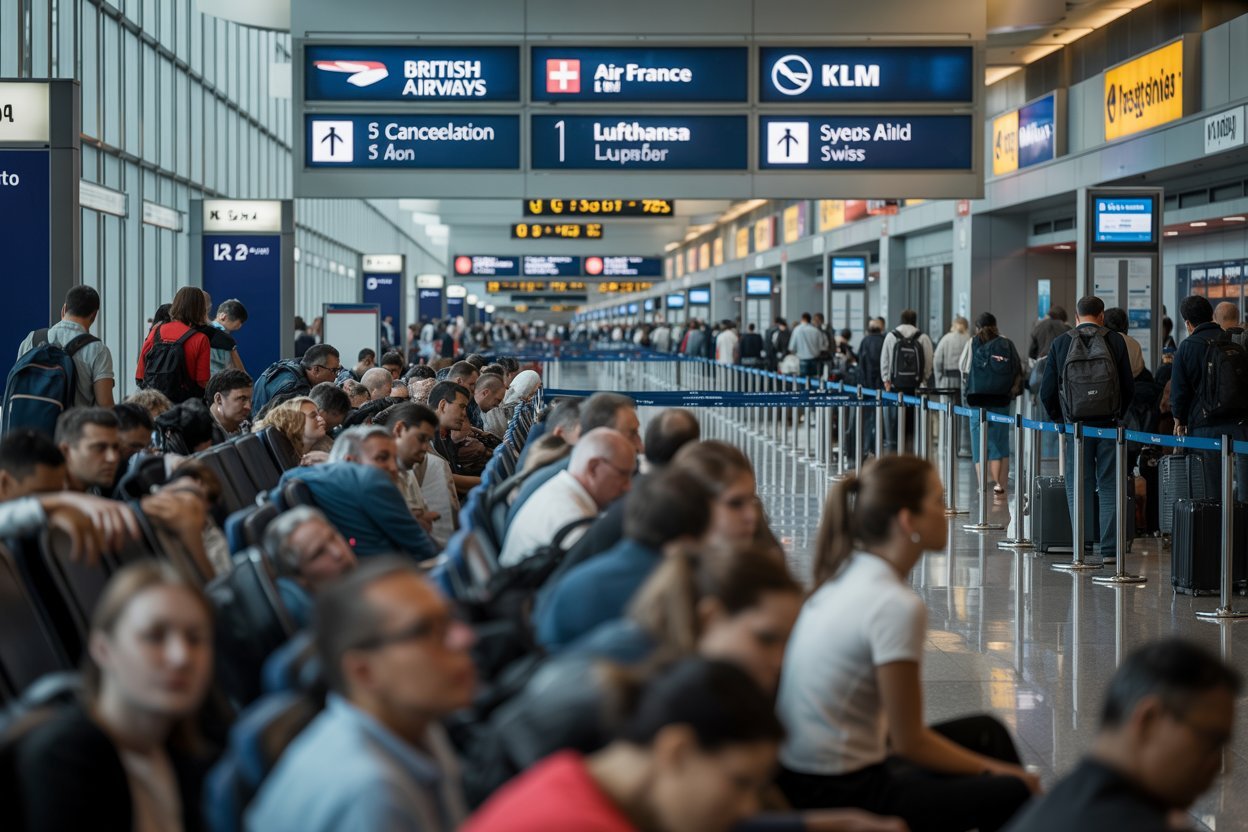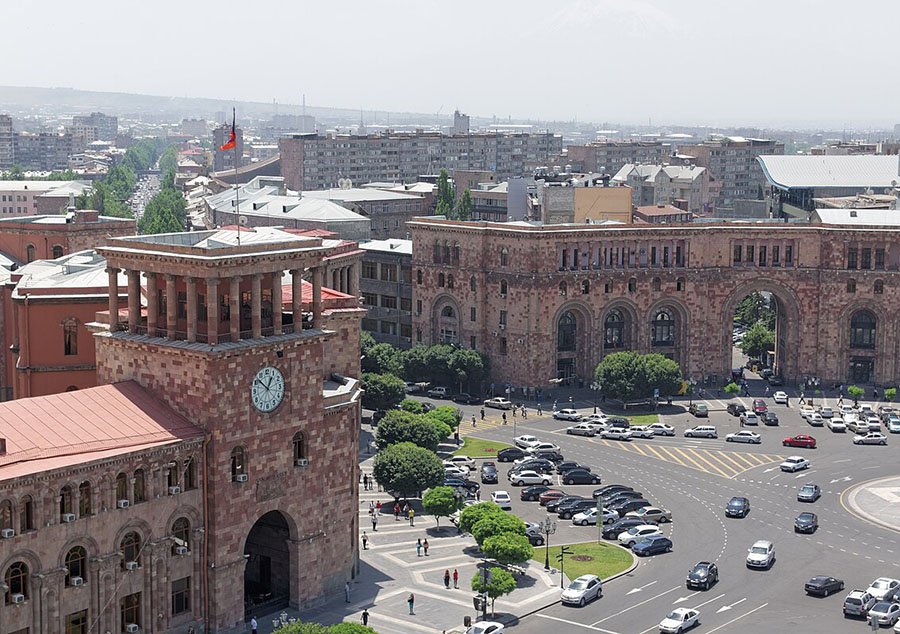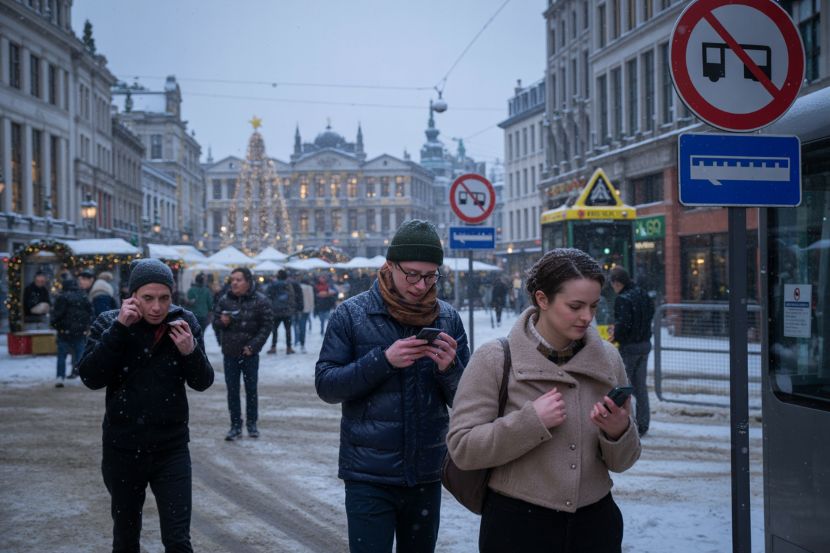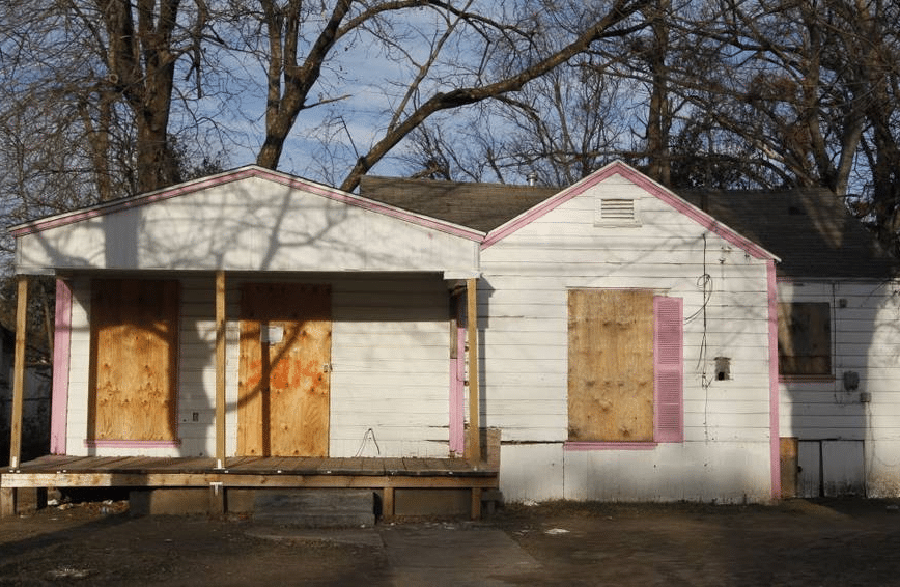читайте также
 Thousands of Passengers Grounded Across Europe as Airlines Face 65 Cancellations and 1,824 Delays
Thousands of Passengers Grounded Across Europe as Airlines Face 65 Cancellations and 1,824 Delays
 UK Braces for Major Snowstorm: Heavy Snow and Freezing Temperatures Disrupt Travel Nationwide
UK Braces for Major Snowstorm: Heavy Snow and Freezing Temperatures Disrupt Travel Nationwide
 Where to Travel for Christmas 2025: From Jerusalem and Germany to Wintertime Georgia
Where to Travel for Christmas 2025: From Jerusalem and Germany to Wintertime Georgia
 Montenegro’s Prime Minister vows to introduce visa restrictions for Russians
Montenegro’s Prime Minister vows to introduce visa restrictions for Russians
 New Rules for Temporary and Permanent Residence in Armenia: What Will Change in 2026
New Rules for Temporary and Permanent Residence in Armenia: What Will Change in 2026
 Thousands of Hotel Rooms Remain Empty Across the UK This Christmas — Despite Record Demand
Thousands of Hotel Rooms Remain Empty Across the UK This Christmas — Despite Record Demand

Across the United States, there are neighborhoods and suburbs where daily life is defined not by comfort and opportunity but by poverty, deteriorating infrastructure, crime, and years of inadequate attention from authorities. On lizanest.com, a ranking of 40 such areas highlights communities where residents must fight every day for safety, access to basic services, and minimal quality of life. These places rarely appear in tourist guides or real estate presentations.
Uneven Development and Urban Decline
40. South Side – Dallas, Texas
Dallas’s South Side remains far from major investment flows despite its rich cultural heritage. Crime clusters around aging public housing and abandoned blocks; schools are overcrowded and operate with outdated equipment; youth programs depend on political cycles and lose funding easily. Yet the neighborhood stays alive through street art, local events, and families who have remained here for generations and refuse to write off their own community.
39. South Side – Oklahoma City, Oklahoma
There are no shocking crime spikes here, but the area suffers a slow erosion of infrastructure and opportunity. Roads are full of potholes, streetlights flicker, and sidewalks deteriorate. The local economy rests on low-paid, unstable jobs, and many families live without clear prospects for upward mobility. A large share of residents are Latino immigrant families facing language and administrative barriers, yet the district remains warm and vibrant thanks to small bakeries, street soccer, and large family gatherings.

38. North Side – Kansas City, Missouri
Two realities coexist within the city, and the North Side often gets the short end of the stick. Violent crime occurs regularly, relations between police and residents are tense, there are few grocery stores and many liquor outlets. Much of the housing stock is worn down, properties pass from generation to generation without funds for repairs, and schools lose teachers and funding. Even so, residents create garden plots on empty lots, hold local celebrations, and try to sustain a sense of community.
37. South Side – Columbus, Ohio
Not far from Columbus’s revitalized downtown, the South Side shows the imprint of abandoned industry: factories that once employed thousands have become graffiti-covered shells. Opioid addiction harms families, while property crime erodes the sense of safety. Nonprofits attempt to fill gaps in social support, but residents face long waits for housing assistance and healthcare. The population is diverse in age and background, yet many needs remain unmet.
36. East End – Houston, Texas
This historic working-class district with a predominantly Spanish-speaking population stands at the frontline of gentrification. Rents and prices are rising, and long-time residents feel gradually pushed out by wealthier newcomers. Crime—especially theft—remains noticeable, and proximity to industrial zones brings environmental risks. The East End’s cultural identity survives through festivals, murals, and family businesses. Many residents fear that rising rents and the influx of affluent newcomers will soon make it unaffordable to stay in their own neighborhood.

35. Southwest – Atlanta, Georgia
Southwest Atlanta rarely receives attention in major development plans and remains peripheral to city policy. Crime rates are high, poverty is persistent, and public transit is so weak that life without a car often means isolation. Schools regularly fall to the bottom of budget priorities. The area holds together thanks to historic churches, local leaders, and active community groups.
34. South Side – Milwaukee, Wisconsin
This part of the city is far removed from tourist routes, brewery tours, and baseball stadiums. Aging housing, lead pipes, and low employment create constant strain; many families live in overcrowded homes. The largely Latino population navigates between hopes of settling down and the reality of limited resources. Schools face significant pressure, yet communities continue to organize bilingual services, family events, and mutual aid.
33. North Side – St. Louis, Missouri
Once a prosperous area, the North Side declined after wealthier residents left, discriminatory lending practices took hold, and local industry collapsed. Many houses now stand vacant, roads crumble, and transit routes have been cut back.
Residents are tired of broken promises from city authorities, but churches, barbershops, and small grassroots groups continue to sustain a sense of community.

32. Southwest – Baltimore, Maryland
Southwest Baltimore is a patchwork of aging row houses, corner stores, and a constant backdrop of crime. Murders, carjackings, and open-air drug markets feel like part of daily life. Schools suffer from underfunding and general system fatigue. Despite this, music fills the courtyards, community centers host programs for all ages, and the district shows remarkable resilience.
31. East Side – San Antonio, Texas
The East Side combines decades-deep poverty with high levels of violent crime. Many homes were purchased or built long ago but have never undergone major repairs. Schools and youth programs are chronically underfunded, leaving children with few alternatives to the streets. Yet the community remains close-knit: residents know one another and support their neighbors, even as their own resources run thin.
Post-Industrial Decline and Crime Pressure
30. Central – Fresno, California
Central Fresno is an area where poverty, a large homeless population, and gang activity coexist in a single reality. Added to this are unreliable public transit, closing stores, and rising living costs. In summer, the neighborhood literally overheats: extreme temperatures make daily life even harder, while limited resources and weak infrastructure heighten social tension.
29. North Lawndale – Chicago, Illinois
North Lawndale is often cited as an example of how urban systems abandon their Black communities. Once a thriving Jewish district, it became predominantly African-American, and then banks and employers left. Today violent crime remains among the highest in Chicago, and about a third of properties stand vacant. At the same time, new urban gardens, youth art programs, and greening projects help revive the blocks and gradually restore a more humane urban environment.
28. Southwest – Detroit, Michigan
Southwest Detroit is culturally vibrant yet economically fragile, with a strong Latino presence. Small cafés and shops operate here, murals brighten the streets, but decades of underinvestment are visible everywhere. Gang presence affects certain blocks, and residents live with continual tension and uncertainty about the future.
27. Roseland – Chicago, Illinois
Originally envisioned as a stable working-class district, Roseland is now associated with high crime, unemployment, and structural decline. Vacant lots and abandoned homes dot many streets, and a significant share of children live below the poverty line. Daily life means navigating unsafe streets, a weak school system, and limited access to quality food. Yet family networks and religious communities help keep people rooted.
26. East Cleveland – Ohio
This small city within the Cleveland metro area is one of the starkest examples of infrastructural and financial collapse. With fewer than 14,000 residents, much of the housing stands empty or in need of major repairs; utilities operate at the limit; police and fire departments respond with delays. Surrounded by more prosperous neighborhoods, the sense of abandonment only grows, though local initiatives and youth centers try to sustain community life and offer some support.

25. South Side – Chicago, Illinois
South Side encompasses a vast collection of neighborhoods, many struggling with unemployment, deteriorating housing, and gun violence. The legacy of segregation, discriminatory housing access, and years of underinvestment is still felt. Some areas now see renovation projects, public spaces, and small-business initiatives, but these changes have yet to shift the broader picture.
24. Central City – New Orleans, Louisiana
Central City still feels the impact of Hurricane Katrina more acutely than many other districts. Recovery here lagged behind, and many residents never regained full access to stable housing and services. Murder rates remain above city averages, and educational and job opportunities are limited. Yet Central City remains part of New Orleans’s cultural heart—music, street parades, and cuisine continue to shape its daily rhythm.
23. Broadway-Fillmore – Buffalo, New York
Once the center of Buffalo’s Polish-American community, this district now faces high vacancy, damaged streets, and long-term economic stagnation. Crime tends to be chronic rather than explosive—petty theft, break-ins, and low-level drug activity. Amid the decline, pockets of the old life remain: historic churches, small shops, and community gardens.

22. South Park – Houston, Texas
South Park combines high crime rates with aging housing and scarce job opportunities. Around 20,000 residents live among abandoned lots, worn-out roads, and limited public spaces. Schools are underfunded, and young people have few clear paths forward. At the same time, the community is lively: weekend barbecues and neighborhood gatherings bring people together.
21. West End – Atlanta, Georgia
West End retains a visible architectural heritage—Victorian homes and historic buildings—but many require major repairs and stand vacant. The district is squeezed by dual pressures: gentrification pushes prices up and residents out, while poverty and crime persist. Locals live between preserving cultural heritage and the risk of losing their homes to rising rents and new commercial developments.
Systemic Decline and Deep Social Wounds
20. South Deering – Chicago, Illinois
This southeastern industrial zone contains factories, warehouses, and empty lots—yet very few residents and almost no services. Just over 4,000 people live scattered among industrial corridors, rail lines, and unused land. Crime is above average, air pollution is significant, and basic amenities are far away.
19. Orange Mound – Memphis, Tennessee
One of the oldest African-American neighborhoods in the country blends pride in its history with the scars of economic and social decline. Nighttime gunfire, shuttered or struggling businesses, limited medical access, and few affordable food options shape everyday life. Yet Orange Mound remains a place of street festivals, murals, and family gatherings, where residents work to preserve the life and character of their community.
18. Penn Hills – Pittsburgh, Pennsylvania
This former model suburb for the middle class now faces infrastructure decay and financial strain. Water and sewer systems need modernization, home values stagnate, and schools are stretched thin. Crime is growing steadily, and the atmosphere vacillates between nostalgia and anxiety about the future.

17. Fordham Heights – Bronx, New York
In a small area of the Bronx, more than 70,000 people live densely packed into walk-ups and public housing. Violent crime, including muggings and shootings, remains a serious concern, while rents are far from low. Infrastructure is aging, services are unstable, but the district pulses with life—music, street food, youth culture, and vendors at Fordham Plaza create a constant sense of movement.
16. Skid Row – Los Angeles, California
This compact area in downtown Los Angeles has become a symbol of the homelessness crisis. More than 4,000 people live in tents and temporary shelters across just a few dozen blocks. Basic sanitation and safety are only partially available despite the presence of shelters and social services. City responses swing between inaction and crackdowns, but within Skid Row a community has formed, with unwritten rules, informal leaders, and mutual support.
15. Quigley Park – Albuquerque, New Mexico
This central Albuquerque district is perceived as a part of the city that has been left behind. Crime—especially break-ins and assaults—is high; businesses close or barely survive; housing is cheap and deteriorating. Youth programs are underfunded, and addiction services rely on a handful of overstretched organizations. An air of fatigue and stagnation permeates the neighborhood.
14. Overtown – Miami, Florida
Once the heart of African-American culture in Miami, Overtown was literally cut apart by highway construction. Today it faces high crime, rising rents, poverty, and the constant threat of eviction. Tourists speed past on elevated highways, barely noticing the life below, while residents try to preserve their homes and cultural heritage.

13. Sandtown-Winchester – Baltimore, Maryland
This district drew national attention after the death of Freddie Gray, but its problems had accumulated for decades. Discrimination, lending denials, mass incarceration, and business flight left behind rows of vacant houses and high levels of armed crime. Median household income is far below the national average, and job opportunities are limited. Even so, some residents participate in revitalization and youth support initiatives.
12. International District – Albuquerque, New Mexico
A multicultural neighborhood home to people from many countries is often called the “War Zone” due to high crime and a general sense of insecurity. Abandoned buildings, outdated infrastructure, and a near-absence of social mobility are visible everywhere. The district has huge cultural potential, but without strong city programs it remains underrealized.
11. Fifth Ward – Houston, Texas
A historically significant African-American neighborhood with rich musical and political traditions has endured long-term underfunding. Poverty, lack of investment, food deserts, and industrial pollution combine with high crime rates. Still, residents take pride in the area’s history, musical heritage, and active community initiatives that help maintain a sense of unity.
The Harshest Living Conditions
10. Gary – Indiana
Built around the steel industry, Gary suffered a dramatic collapse when mills closed and jobs vanished. The population fell from roughly 180,000 to under 70,000; entire blocks emptied out, schools and stores closed, and hundreds of houses were abandoned. Crime rates are three times the national average, and city services barely maintain basic functions. Nonetheless, artists, teachers, and activists work to revive the city through education and creative use of vacant buildings.
9. South Central – Los Angeles, California
Officially renamed South LA, the area remains associated with riots, gang wars, and racial inequality. More than 800,000 people live here; schools are overcrowded, unemployment is high, and many residents view police presence as pressure rather than protection. Some blocks are gentrifying, gaining new cafés and improved streets, but for most residents the key issues—poverty, crime, and weak infrastructure—remain unresolved.
8. Pine Hills – Florida
This Orlando suburb of about 60,000 residents has long carried the nickname “Crime Hills.” Assaults, thefts, and other crimes occur frequently; infrastructure is worn out; roads need repair; and public spaces are scarce. Schools are overloaded and underfunded, leaving young people with few stable career paths. Families live in constant alertness, and fear becomes part of everyday life.
7. North Charleston – South Carolina
This industrial suburb sharply contrasts with Charleston’s polished, tourist-oriented historic center. Nearly 120,000 residents face persistent poverty, high crime, and a degraded housing stock. The economic base tied to textiles and military facilities has weakened; many buildings have become warehouses or semi-abandoned motels. Murder and violence rates remain above average, and affordable housing is shrinking.

6. Compton – California
Compton is well-known from popular culture, but behind the music-video imagery is a harsh reality. With about 95,000 residents, the city struggles with the legacy of gang violence and limited access to basic services. Crime statistics have improved from the worst periods, but distrust of law enforcement, high school dropout rates, and a lack of safe public areas still shape daily life. Youth culture and local initiatives help slowly shift the atmosphere and improve the district’s reputation.
5. Highland Park – Detroit, Michigan
This tiny enclave within Detroit—less than 3 square miles, with under 10,000 residents—is considered one of the most severe examples of urban decline. Nearly half of its residents live in poverty; abandoned houses outnumber occupied ones; and streetlights were removed at one point due to unpaid electricity bills. Car thefts, assaults, and shootings remain serious threats, city services operate at a minimum, and the infrastructure has lacked systemic repair for years.
4. North Memphis – Tennessee
Around 60,000 people in North Memphis live amid deep poverty and high crime. Sidewalks are cracked, broken glass litters the streets, and many homes need critical repairs or are near collapse. Few stores offer fresh, affordable food; schools lack resources; and industrial sites sit close to residential blocks, worsening environmental conditions. Despite this, the area maintains a rich spiritual and musical culture tied to Memphis’s African-American heritage.
3. East St. Louis – Illinois
Once a bustling industrial center, East St. Louis plummeted after factories closed and jobs vanished. Today more than 40% of residents live below the poverty line; roads and infrastructure are in severe disrepair; and city services often struggle to function. The city regularly ranks among those with the highest violent crime rates per capita. The situation is compounded by the sense that the rest of the state has long left it without support.

2. Camden – New Jersey
Camden, once a major industrial center, is now considered one of the poorest and most dangerous cities in the U.S. More than 70,000 residents face limited access to healthcare, quality schools, and even basic grocery stores. In recent years, the waterfront and selected areas have been renovated, but inner neighborhoods remain largely unchanged: abandoned homes, closed schools, and visible street violence dominate the landscape.
1. Englewood – Chicago, Illinois
Englewood, on the South Side of Chicago, has become a symbol of long-term decline and isolation from city development. About 25,000 people live here, and the area faces high crime rates, numerous vacant properties, closed schools, and persistently high unemployment. Economic decline and business flight have continued for decades, and even the work of nonprofits and youth programs has not yet shifted the overall trajectory.
Photo: lizanest.com
Подсказки: USA, cities, urban issues, inequality, poverty, crime, neighborhoods, real estate, social problems, Chicago, Los Angeles, Detroit, Houston





